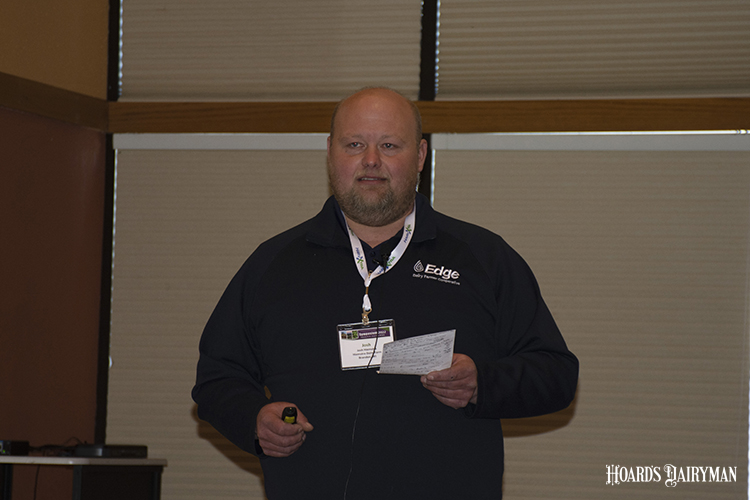
The way Josh Hiemstra manages the fields surrounding his family’s 170-cow dairy near Brandon, Wis., has changed considerably since he started farming with his parents. Over the years, he has turned to a biological method of farming. This includes the use of cover crops, minimal tillage, less reliance on chemical fertilizers, and more frequent manure application.
“I am grateful for my parents who let me farm with them, and for letting me do things different than the norm,” he said during a presentation on cover crops at the Midwest Forage Association’s 2022 Symposium. Hiemstra said he started farming around the time his grandfather retired, but how they farm the land now is probably closer to the way it was done when his grandfather began his farming career.
Biological farming focuses on what’s happening underground with the microbes we need a microscope to see. Hiemstra likens these microbes to underground livestock.
“They are the ones that do the work,” he noted. “They are the ones that do the heavy lifting.”
Hiemstra said these microbes need food, such as crop residues, fresh air, which means soils can’t be compacted, and water that is accessed through proper filtration and drainage.
“Every decision we make is based on how we can stimulate microbiological activity,” Hiemstra shared. “We want our biology to pay us back. We don’t want our soil to expect us to pay it every year.”
One of the reasons they changed the way they farmed, Hiemstra said, was “to take their soil off of food stamps,” including the use of tillage, fungicides, insecticides, and some commercial fertilizers.
As for cover crops, Hiemstra offered the audience some advice. Acknowledging that planting covers costs time and money, he said, “Feeding them is the quickest way to get your return on investment.”
He noted the importance of harvest timing as it equates to feed quality. “We treat our covers like any other crop we grow for our cows,” he shared. “We are feeding our covers to feed the biology. The biology is feeding the next cash crop, which is going to feed our cows, and the cycle starts all over again.”
He also encouraged farms to try different mixes and methods to find what works best for them. “Nothing will help you make more money than doing on-farm research and seeing how it can improve your bottom line,” he said, noting that more yield (production) does not always equate to more money (profit).
Hiemstra said that they have learned a lot over the years, including what not to do when it comes to biological farming. While this is a different way of thinking from when he first started farming, he has jumped in with two feet, and he thinks that more farmers will head this direction, too. “I believe in the future, this will be the norm, not the exception,” Hiemstra hypothesized.








